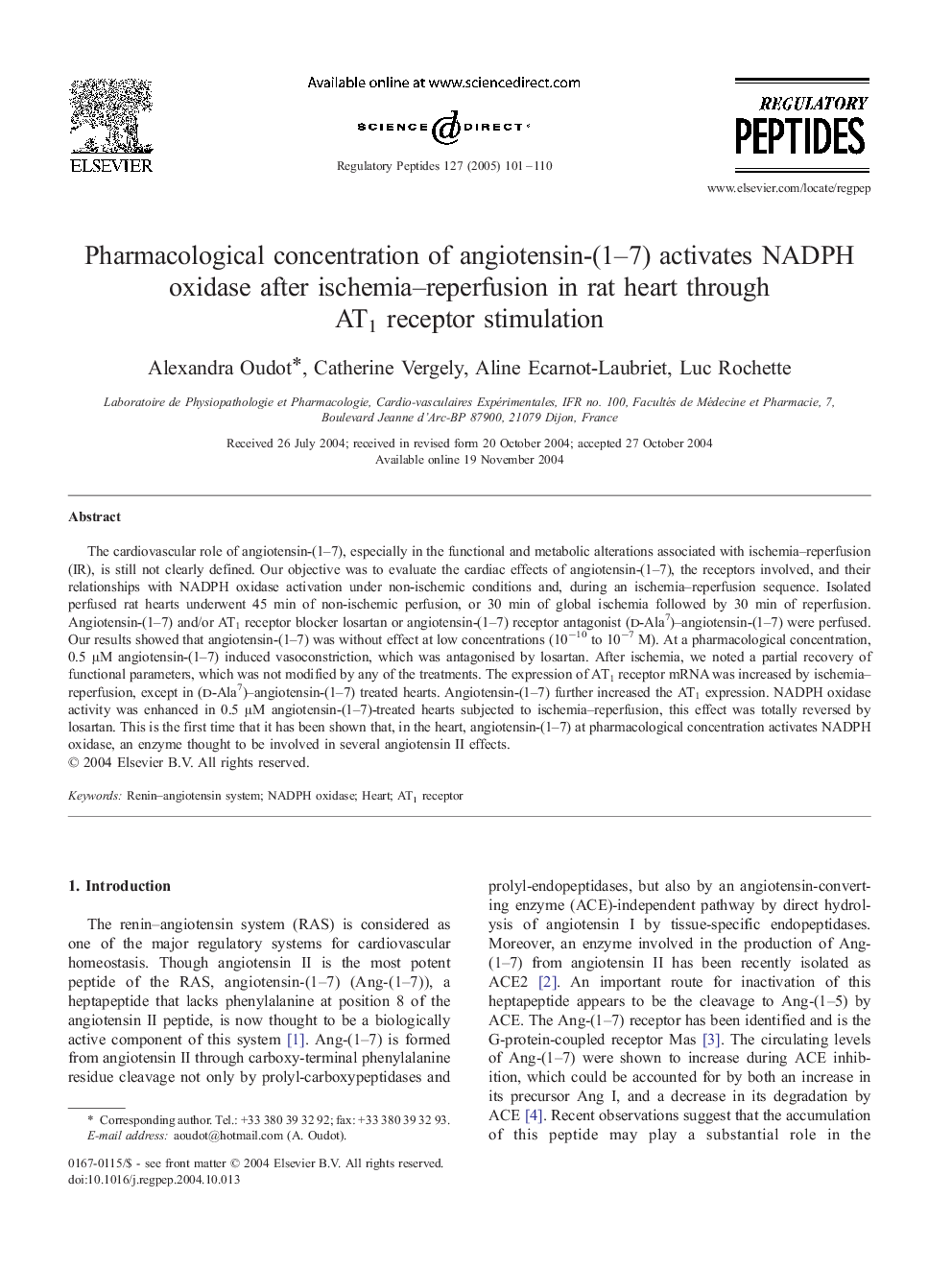| Article ID | Journal | Published Year | Pages | File Type |
|---|---|---|---|---|
| 9894447 | Regulatory Peptides | 2005 | 10 Pages |
Abstract
The cardiovascular role of angiotensin-(1-7), especially in the functional and metabolic alterations associated with ischemia-reperfusion (IR), is still not clearly defined. Our objective was to evaluate the cardiac effects of angiotensin-(1-7), the receptors involved, and their relationships with NADPH oxidase activation under non-ischemic conditions and, during an ischemia-reperfusion sequence. Isolated perfused rat hearts underwent 45 min of non-ischemic perfusion, or 30 min of global ischemia followed by 30 min of reperfusion. Angiotensin-(1-7) and/or AT1 receptor blocker losartan or angiotensin-(1-7) receptor antagonist (d-Ala7)-angiotensin-(1-7) were perfused. Our results showed that angiotensin-(1-7) was without effect at low concentrations (10â10 to 10â7 M). At a pharmacological concentration, 0.5 μM angiotensin-(1-7) induced vasoconstriction, which was antagonised by losartan. After ischemia, we noted a partial recovery of functional parameters, which was not modified by any of the treatments. The expression of AT1 receptor mRNA was increased by ischemia-reperfusion, except in (d-Ala7)-angiotensin-(1-7) treated hearts. Angiotensin-(1-7) further increased the AT1 expression. NADPH oxidase activity was enhanced in 0.5 μM angiotensin-(1-7)-treated hearts subjected to ischemia-reperfusion, this effect was totally reversed by losartan. This is the first time that it has been shown that, in the heart, angiotensin-(1-7) at pharmacological concentration activates NADPH oxidase, an enzyme thought to be involved in several angiotensin II effects.
Related Topics
Life Sciences
Biochemistry, Genetics and Molecular Biology
Biochemistry
Authors
Alexandra Oudot, Catherine Vergely, Aline Ecarnot-Laubriet, Luc Rochette,
